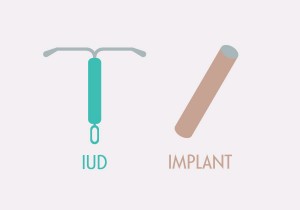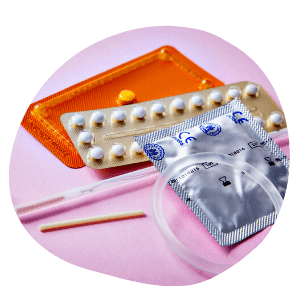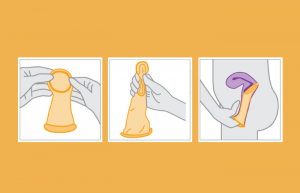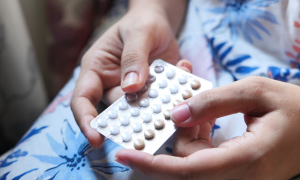
Five Things You Should Know about Herpes
ASHA answers many questions from the public about STIs, including about genital herpes. Here we offer five things to know about how to manage this common infection.

Approximately half of the 20 million new cases of sexually transmitted infections (STIs) in the U.S. each year occur in teens and young adults ages 15-24. Why are STI rates so high among young people? For insight we chatted with Dr. J. Dennis Fortenberry, a Professor in the Department of Pediatrics at the Indiana University School of Medicine. Dr. Fortenberry, who is a former member of ASHA’s Board of Directors, specializes in both adolescent medicine and internal medicine.
Dr. Fortenberry: There’s no simple answer to your question. In the U.S. most young people begin having sex in their middle to late adolescence and that’s a time when they’re having new exposures, forming new relationships and in many ways they’re learning how to understand both the risks of sex within the context of these new relationships along with their potential for infection.
It’s important to remember that most of the young people who start their sexual lives in their adolescence and early adulthood years don’t get STIs, so we keep in mind the differences between risk and the people that actually get infected. The statistics cover a 10-year period from age 15 to age 24, and as I said there are a lot of changes in young people’s lives over that time. Many of those infections are actually occurring in the group of people ages 18 to 24, so the rates of infections may be very different in those under age 18. We should really sort out the statistics a little bit before we get too overwhelmed by how bad the data look.
No one has fully sorted out the intersection of young people, biological changes, and increased susceptibility to sexually transmitted organisms. Studies have identified potential factors such as the relative immaturity of the cervix making young women more susceptible to infection. It’s also been suggested that the immune system itself in young people is less prepared to respond when exposed to sexually transmitted organisms. It’s not known that any of those potential factors are truly part of the story in terms of truly understanding younger people’s risks, though.
As best as we can tell the major factor driving STIs in young people is exposure through sexual encounters, especially those that don’t involve a barrier like condoms. Environment plays a role, too, such as young people choosing partners in communities that have high rates of STIs.
I think the issue of how well we do with sexual health education is really quite varied, and you see sharp variations not only between states, but even between cities and from school-to-school. There’s data showing that states that don’t do as well in terms of offering comprehensive sexuality education actually have higher rates of STI that are common in young people (like gonorrhea and chlamydia). Not surprisingly, then, states that do a better job with comprehensive education actually have lower STI rates. Those are important indicators that give a clear message: when we empower young people with education, knowledge, and understanding of their own sexuality, when we help them understand how to experience their sexuality in developmentally appropriate ways, we reduce their risks of infections.
I think it’s really critical for parents to recognize they are the primary source for information and values, the main influence in their child’s sexual health development. Parents often don’t think about their kids in terms of sex and sexual health until they hit puberty or become teenagers, but it’s important for parents to understand that the influence they have on their teens’ sexuality begins very early, starting with conversations that go on almost from the time they begin to interact with their children.
This has to do with how kids learn to take care of themselves, respect themselves, and understand about their own genitals. Later, this includes understanding the differences between people and, as the child grows older, they begin to understand the way relationships work between people, and then how sex interacts with those relationships.
So it’s not one conversation, it’s not even ten conversations, it may be a hundred conversations that really connect young people to their parents and really help the young people accept their own parent’s perspectives on things.
We’ve just finished a study that showed providers often don’t talk to young people about sex even during an annual check-up, and when they do these conversations may last less than half a minute. I think we can do a better job of educating physicians about how to do address these issues with parents and their adolescents. Part of this involves us doing a better job as parents: we need to communicate to providers just what our expectations are regarding the sexual health care of our adolescents. Also, there’s a need to establish confidential visits with young people so that sex can be discussed.
All of this allows the parent and physician to work together to make sure concerns and questions are appropriately and effectively addressed.

ASHA answers many questions from the public about STIs, including about genital herpes. Here we offer five things to know about how to manage this common infection.

The name says it all. Long-acting reversible contraception, or LARC, is reversible birth control that provides long-lasting (think years) pregnancy prevention.

“[Girls] have told by society that sex is great but that’s not their experience. They don’t know how to talk about that disconnect, there’s a certain amount of shame that shuts down their voice….for me, sexual empowerment for girls is helping them to find a

When I was a teen, my fellow adolescent wise-guys and I were a bit awed by condoms. They were serious business back in the day; simply possessing one conferred a certain level of credibility. They were kind of scary, too, a foil-wrapped reminder that we

Nearly all women use birth control at some point in their lives, and soon they’ll have one more option available. On May 22, the U.S. Food and Drug Administration (FDA) approved Phexxi, a non-hormonal contraceptive gel that works by keeping the pH levels in the

For those with insurance coverage, internal condoms can now be ordered for free online and shipped directly.

An FDA advisory panel voted unanimously last week that Opill, a progestin-only birth control pill, should be available over the counter.

Sue Johanson, perhaps Canada’s most famous sex educator of all time, died in June at the age of 92. Johanson was known for her clear advice and her sense of humor.
ASHA believes that all people have the right to the information and services that will help them to have optimum sexual health. We envision a time when stigma is no longer associated with sexual health and our nation is united in its belief that sexuality is a normal, healthy, and positive aspect of human life.
ABOUT
GET INVOLVED
ASHA WEBSITES
GET HELP
© 2025 American Sexual Health Association